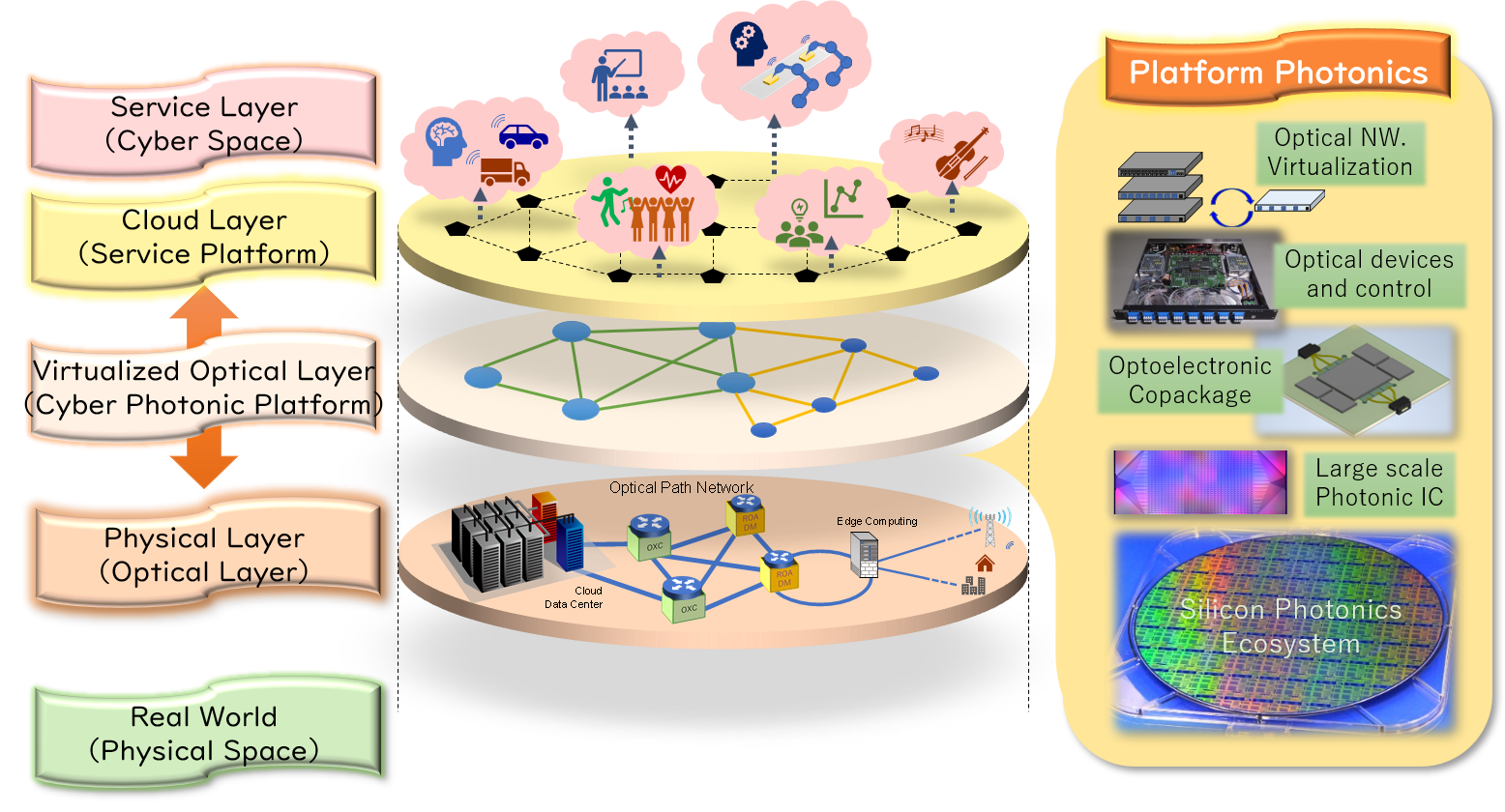"Platform photonics" --- the key to the next-generation information infrastructure
Photonics has the inherent value of offering an ultrawide bandwidth of several tens of THz over the long distances of optical fibers, ultra-low latency and ultra-low energy consumption due to the propagation of light, and ultra-high security through physical distance and quantum communication. Even more importantly, it is able to offer all of these features at the same time. However, unless the problem of handling photonics as a highly virtualized cyber-physical system can be overcome, it will not be possible to fully utilize the potential capabilities of photonics in the future. Optical fiber and optical communication devices are currently installed and maintained individually through the manual labor of highly skilled engineers, and there is a lack of ability to see or control their state from a virtualized network.
In order to improve such systems and make them easier to use, it is necessary to improve both performance and cost by integrating the individual functions in devices, to make these devices easy to handle, and to introduce virtualization and enable automated control in systems. Furthermore, it is also important to enable sustainable development of the industry itself by building an ecosystem where anyone can easily develop new devices and systems. In order to make photonics easier to use in these kinds of information infrastructures, the key is the concept of platforms in technological areas such as device integrated circuit platforms, system automated control platforms, and platforms for technology development (ecosystems).
The following diagram shows the forms by which the service platforms provide various services in cyberspace in addition to in real society in physical space using the cyber-physical systems mapped out by Society 5.0. Although it is the role of the optical network to actually connect these two by transferring a huge amount of information, the optical network itself also needs to form a cyberspace above the physical space. In other words, the physical layer of the optical network that is installed in real society, that is the optical layer, also needs to be virtualized as a digital twin formed in cyberspace. Here, let us call this a cyber photonic platform. The service platforms access the digital twin of the optical layer formed in the cyber photonic platform to extract and abstract the required information, and provide the individual services in cyberspace.
